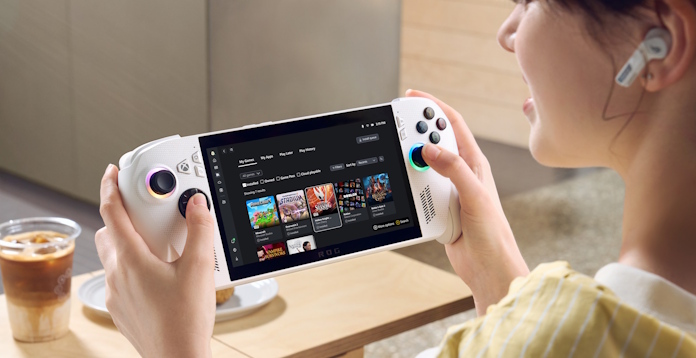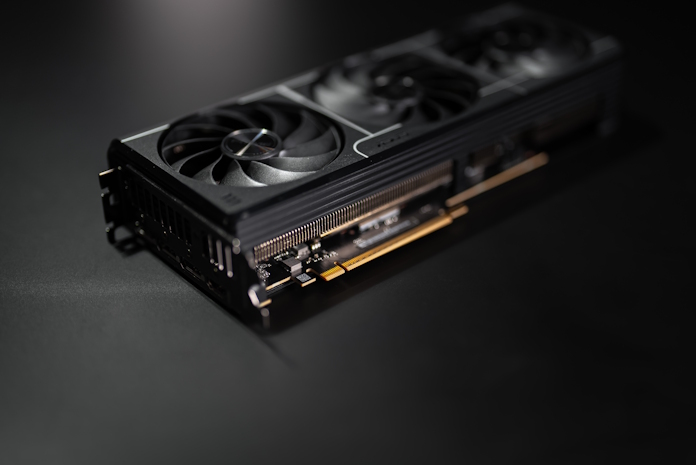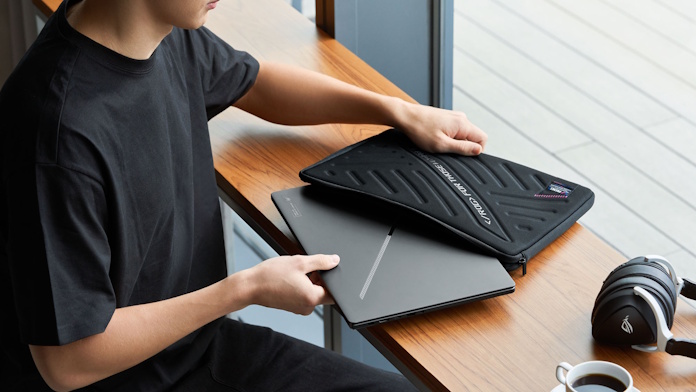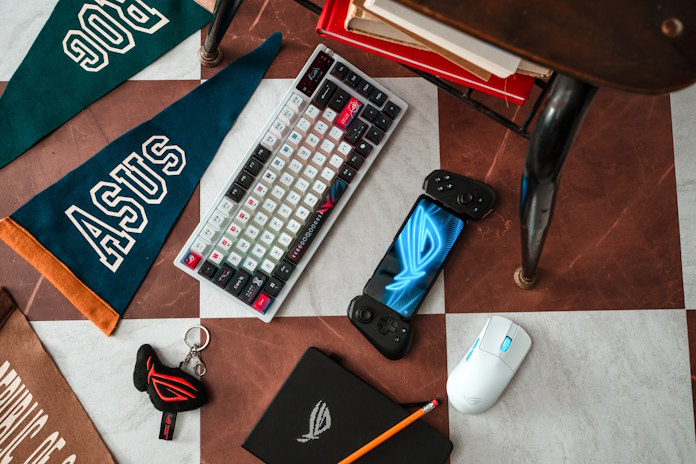The first graphics card that showed up in my house’s family room PC back in the 1990’s was bought for a singular purpose. My dad ran a drafting business out of the house, and that graphics card made it possible for him to ditch his massive drafting table and work digitally instead. I had other ambitions for that graphics card. It let me sneak out of bedroom at night and play Star Wars Jedi Knight: Dark Forces II.
At the time, it wasn’t entirely common for a graphics card to get used for both professional work and for PC gaming. Most of my friends built a computer for one use case or the other — mostly gaming. But in 2025, it’s very common for GPUs to get tasked with a wide range of workloads. Beyond their specialized prowess at rendering game worlds, they create new possibilities for video editing, 3D animation, product design, AI workflows, and so much more.
That makes a GPU all but essential for today’s students. If you’re shopping for a laptop or desktop PC components, you shouldn’t feel like a GPU is a luxury pick that’s just for after-hours gaming. The advantages a GPU brings extend far beyond gaming or entertainment, accelerating projects in a wide range of majors including computer science, engineering, business, design, or even liberal arts. For today’s students, GPU muscle is more important than ever.
Why graphics power is no longer optional
Most of today’s CPUs include integrated graphics, a small processor built into the CPU die that’s capable of handling all the basics: driving a display, light entertainment, and more. Some CPUs even include bolstered integrated graphics power capable of providing an excellent PC gaming experience. Check out the potent graphics performance on tap with the Ryzen AI Z2 Extreme CPU in the upcoming ROG Xbox Ally X, for instance, or the ROG Flow Z13, a 13-inch tablet that’s primed to perform in PC gaming.

Today’s educational demands, however, far outpace what basic hardware can handle. With courses increasingly centered on creative media, 3D modeling, scientific simulation, programming, and even AI-driven research, students need a machine that can match the rigor and variety of their workloads.
On the laptop front, a discrete GPU is what lets you go beyond the capabilities of integrated graphics. It’s a dedicated processor with its own memory and resources, built specifically for handling complex graphics and computational tasks. Discrete GPUs range from entry-level units that kick your performance up a notch to top-level laptop GPUs that trade blows with what you can get from a full-sized desktop PC.
If you build your own PC, you’ll have access to the most powerful graphics cards on the market. Unhindered by the power, space, and cooling limitations imposed by the confines of a laptop chassis, today’s desktop graphics cards are breaking new ground in terms of performance and features.
Accelerating creativity and productivity
Let’s take a closer look at the ways that today’s college students are making use of GPUs, starting with creative disciplines. Graphic design, video editing, architecture, and digital media rely on graphics horsepower to move smoothly from concept to finished product. Apps like Adobe Creative Cloud, Blender, Autodesk AutoCAD, and DaVinci Resolve are engineered to take advantage of GPU resources, enabling real-time previews, faster rendering, and richer visual experiences. With such hardware on tap, exporting a high-resolution video, rendering a 3D architectural walkthrough, or even retouching a magazine layout becomes drastically faster and more fluid.

When your machine can keep up with demanding creative workflows thanks to GPU horsepower, you’re less likely to break your focus waiting for a progress bar or dealing with laggy previews. That extra performance can mean the difference between hitting a deadline and missing it, or between presenting a project that’s truly polished versus something barely assembled.
STEM, coding, and the future of work
In engineering, computer science, and mathematics, modern curriculum is moving into territory where parallel computing and simulation are baseline requirements. Writing and testing code, running simulations, and visualizing data have all become far more efficient using the computational muscle of modern graphics processors.
For aspiring data scientists and AI researchers, GPUs are even more crucial. Many popular programming libraries such as TensorFlow or PyTorch are optimized to run workloads on GPUs rather than CPUs, taking advantage of the massively parallel nature of graphics cards to accelerate machine learning, data analysis, and scientific computation. What might take hours on a CPU can be completed in a fraction of the time with a GPU, making experimentation, learning, and iteration far more feasible for students working under tight deadlines.
Unbounded access to AI
When AI-powered services like ChatGPT first launched, many educational institutions worried about students using the new technology for cheating. But as it’s turning out, students are making much savvier use of AI capabilities than spitting out a few paragraphs of analysis on Romeo and Juliet. They’re using AI to get conversational explanations of tough concepts. They’re augmenting the materials provided in their textbooks with additional examples and deeper context. They’re using AI to quickly survey, assess, and summarize large datasets. Many even use AI just for conversation, using a chatbot to talk through problems and concerns that they’re not quite ready to entrust to another human being.

The difficulty that many of these students face is that cloud-based AI services come with token-based limitations. It’s not that hard to reach your daily limit with such services, especially during crunch time. The better answer is to run an AI chatbot on your own PC. A graphics card with plenty of VRAM can get you there, giving you the ability to accelerate your educational endeavors without limits.
Versatility beyond the classroom
Of course, life isn’t all about academic achievement. Let’s face it: after a full day of classes and homework, many students like to unwind with their favorite game. Here too, a laptop with a discrete GPU or a desktop PC with a next-gen graphics card makes all the difference. Whether you prefer competitive online games or immersive single-player adventures, a GPU will knock down the barriers holding back your ambitions. They’re built from the ground up to boost your FPS and enable realistic graphics settings, giving you an edge over opponents and drawing you into virtual worlds like never before.
What to look for as you’re shopping for a back-to-school PC
Most students’ PC setup starts with a laptop that’s ready to pack up and take to classes. When searching for your next school-ready laptop, look for one that explicitly advertises a discrete GPU. Models from the ROG or TUF Gaming lineup are easy to recommend. Laptops equipped with a top-end NVIDIA GeForce RTX 5090 Laptop GPU put incredible power at your fingertips, but as a college student you’re not limited to the most expensive models in the series. NVIDIA GeForce RTX 5070 Laptop GPUs offer an incredible balance of price to performance.

Pay attention to not just the model of the GPU, but also how it’s integrated into the system. Good thermal management and sufficient VRAM are critical in making sure the GPU can shine. If effortless portability is a must, ROG Zephyrus laptops blend power with sleek designs, so you’re not always trading battery life or convenience for raw speed.
Many students prefer to equip themselves with both an ultraportable laptop and a powerful desktop PC. This gives them the convenience of a compact notebook that fits easily into their backpack and on classroom desks, while also supercharging their academic and gaming pursuits with powerful PC performance when they’re back in their dorm room or apartment. If you’re looking for resources to help you build a PC for Back to School 2025, check out the ASUS PC DIY site, browse through the Back to Basics articles here on Edge Up, or chat with PC building veterans over at the ASUS PC DIY Community.
The bottom line: set yourself up for success
There was a time when graphics cards or laptops with GPUs were either seen as luxury picks for college students with a gaming hobby or specialized tools for students in very specific majors. Today, they’re critical assets for everyone who wants their technology to keep pace with their educational ambitions. From accelerating creativity and enabling advanced STEM work, to driving smooth gaming experiences and unlocking emerging AI technologies, GPUs are reshaping the learning landscape.

The Back to School shopping season is a great moment to bolster your PC setup with GPU horsepower. Whether you’re looking for a next-gen laptop or the parts to build your own PC, ASUS has you covered. Click here to browse our latest hardware for learners.

